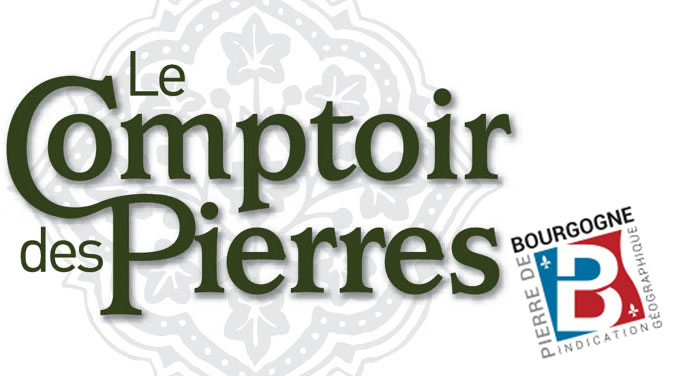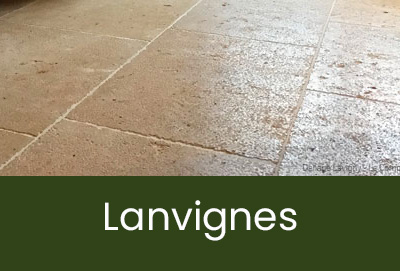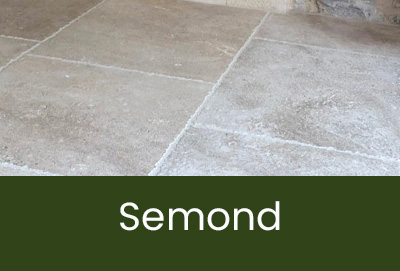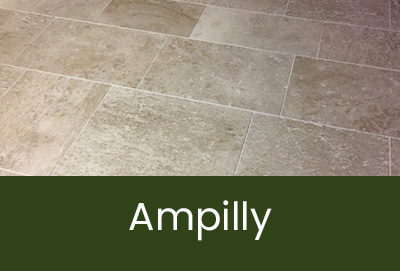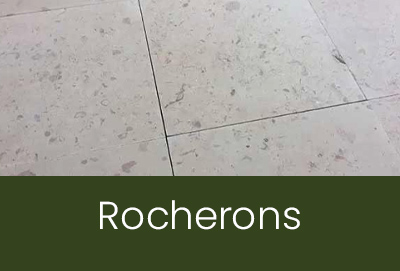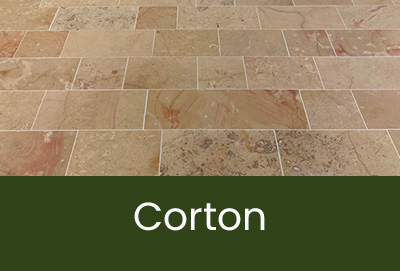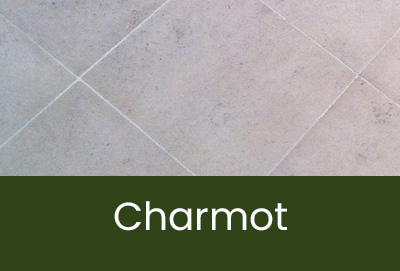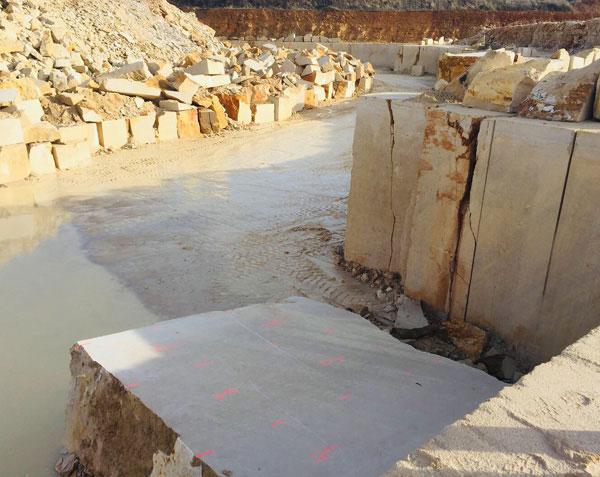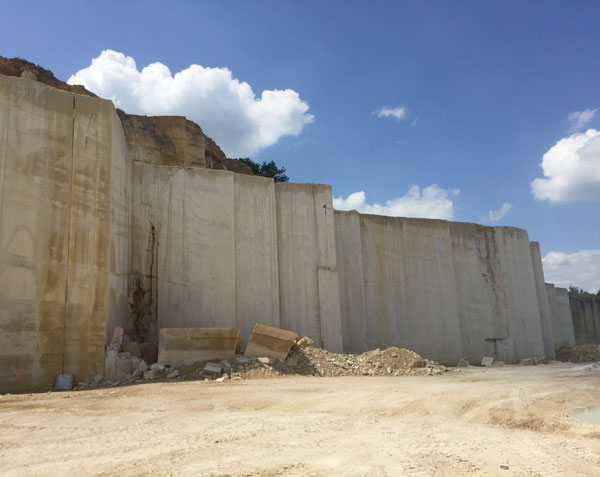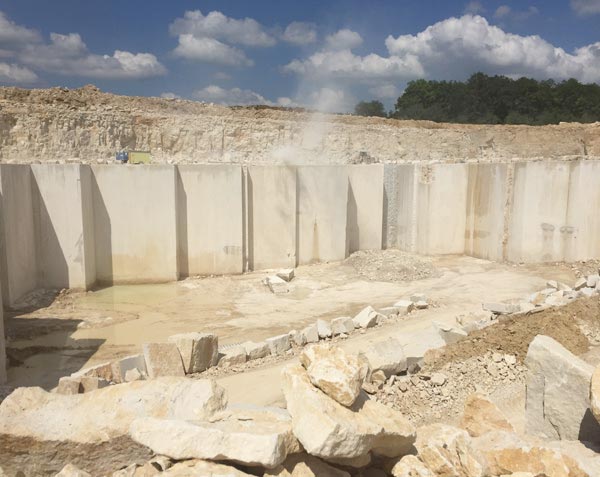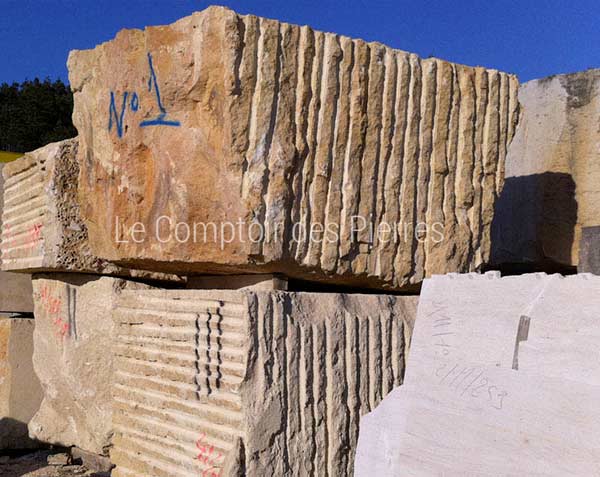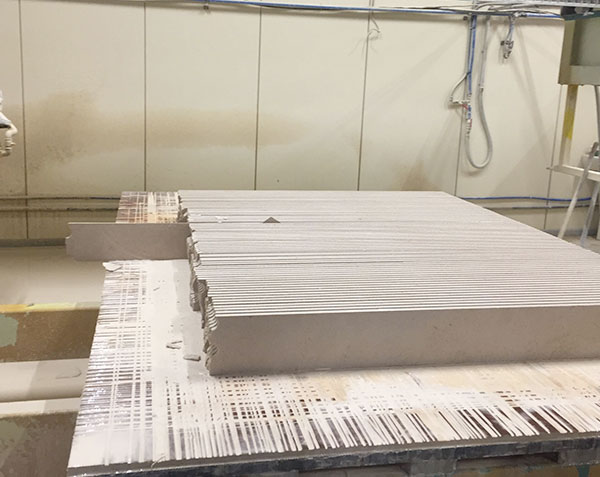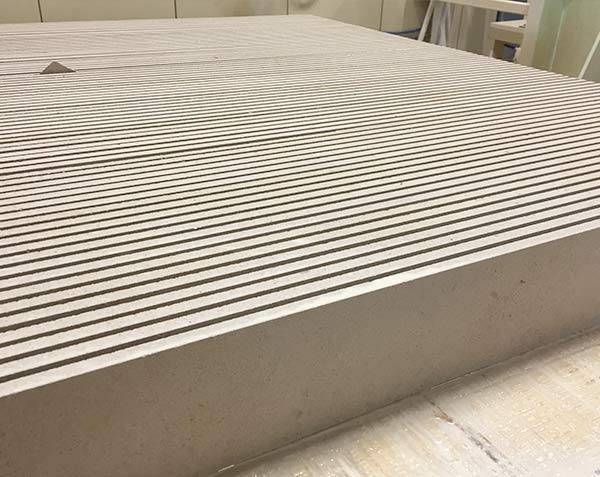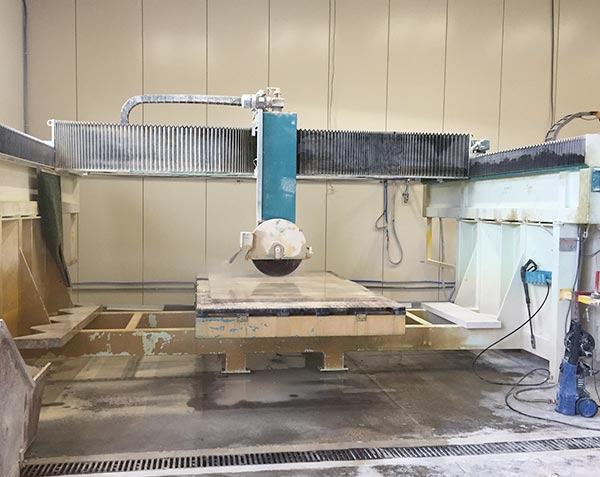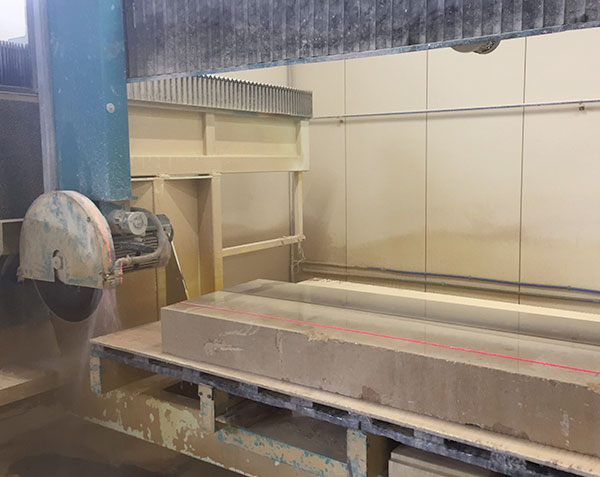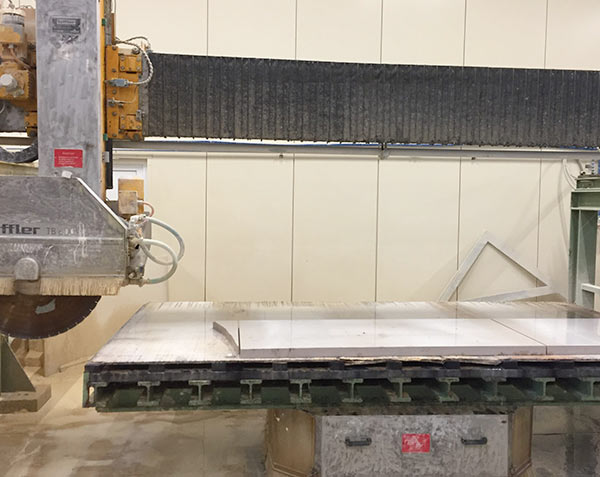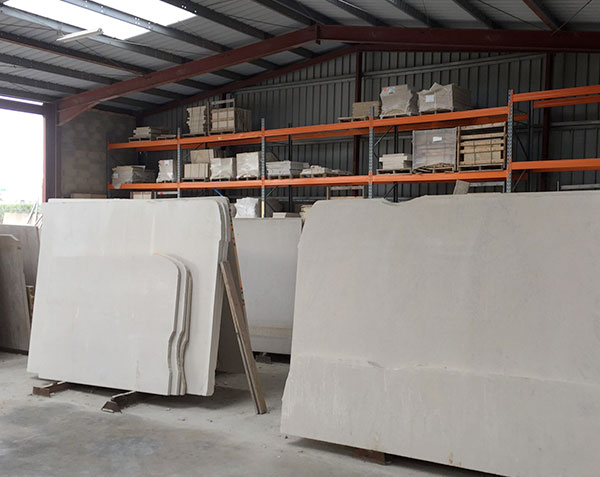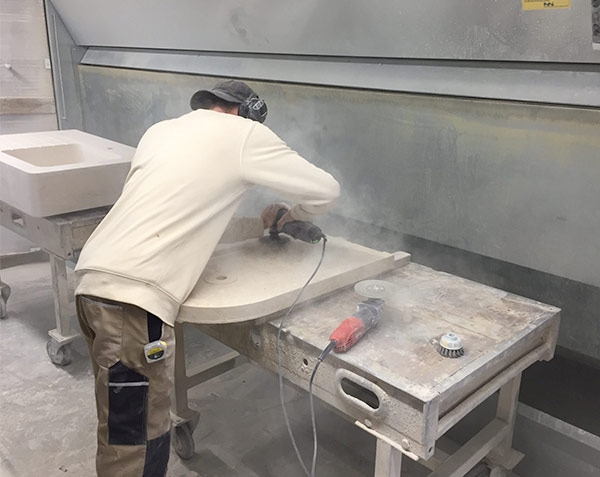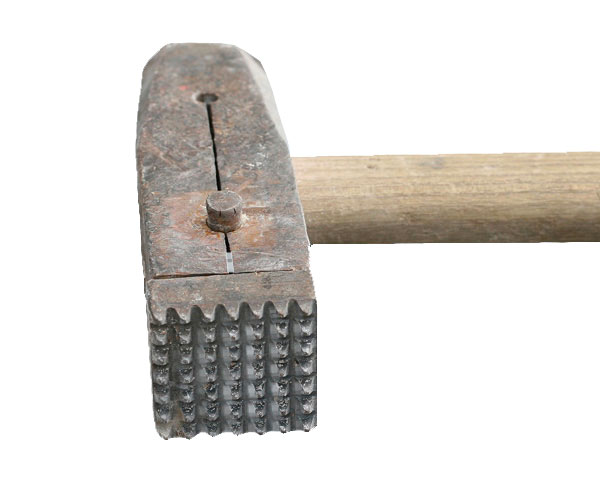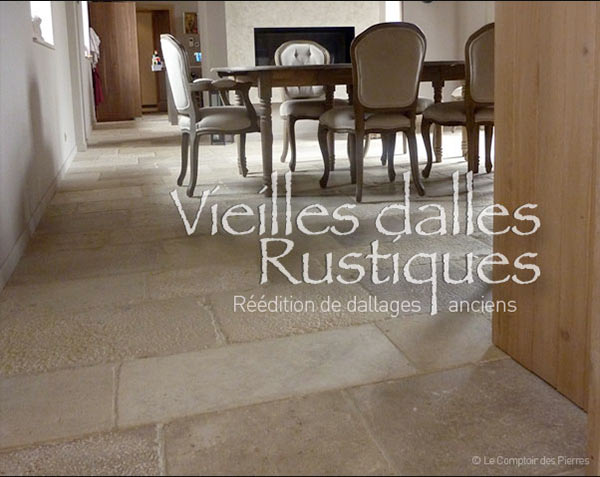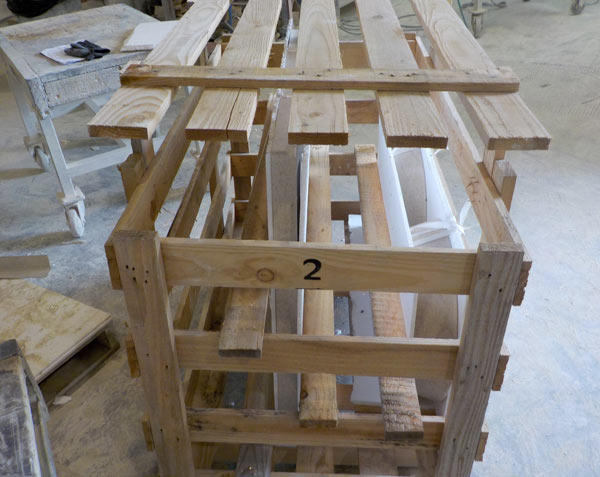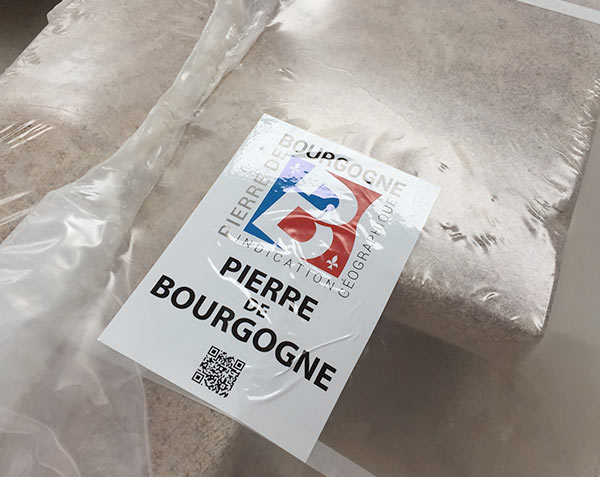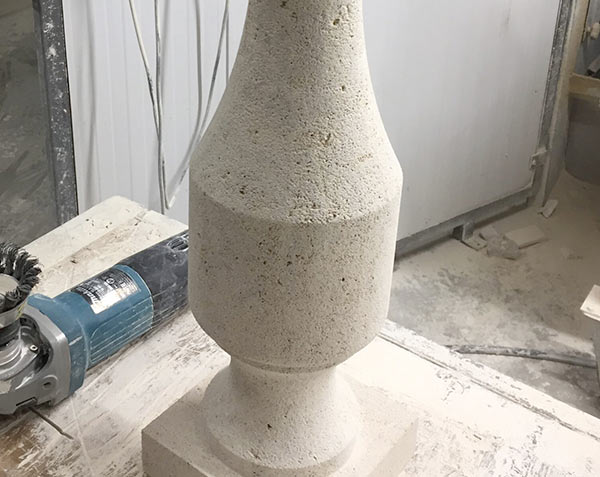Our stone cutting workshop
Quarry worker, stonecutter, and installer.
Before presenting our workshop, it's important to first shed light on the various professions within the stone industry. Indeed, the ornamental stone sector, particularly Burgundy stone, revolves around three types of stakeholders.
① The quarry worker: extraction of the blocks
② The stone cutter or mason: transforms the raw material into finished products
③ The installer: the professional who installs stone products for individuals or businesses (tiler, mason, pool installer, landscaper...)
The quarry worker manages the extraction of stone blocks using specialized equipment such as the "haveuse" (a saw that cuts blocks directly from the quarry face). Quarry workers, as quarry operators, either own the land or lease it (often from municipalities or private landowners, typically farmers). They may operate multiple quarries if part of a large structured group, or just one quarry if it's a family-run business with only a few individuals involved in extraction and sales.
Quarry workers sell their blocks to stone cutters both in France and internationally. They often provide primary sawing services for these cutters, which involves transforming the block into slabs. An average block weighs between 8 to 10 tonnes and is typically less than 250 cm in length.
The stone cutter transforms the block or slab into finished products such as paving stones, sinks, pool coping, sculptures, and more. Depending on the size and resources of the company, the work can be done manually using tools like chisels, mallets, and power tools, or with modern tools like CNC machines that automate repetitive tasks such as sink cutouts or standardized molding.
The type of production can be either artistic, involving historical monuments, rose windows, or arches with figurative elements, or for private homes as decorative items like floor coverings, shower trays, sinks, and pillars. The term "façonnier" comes from "façonnage" or custom work. A stone cutter works either in a workshop or on-site, especially in restoration projects.
The installer places stone elements in homes or businesses. Installers encompass various professions such as tilers, masons, landscapers, pool installers, bathroom specialists, and general renovation companies. These professionals may specialize in natural stone or work with other materials as well. They are required to adhere to current standards (DTU) specific to the type of construction they are working on.
Le Comptoir des Pierres, a major figure in stone carving
Le Comptoir des Pierres is a family-owned company specializing in stone cutting. We are not quarry owners ourselves but instead purchase blocks that we carefully select from several quarries in Burgundy. Typically, we entrust the primary sawing process to quarry workers, where blocks are cut into slabs according to our specifications (ranging from 15 mm to 20 cm in thickness). These slabs are transported from nearby quarries by flatbed trucks, primarily from the specialized company Frechot.
Subsequently, we transform these slabs into finished products using our saws, CNC machines, and stone cutters. Our team comprises a total of 16 individuals across workshop, sales, and administrative roles.
Le Comptoir des Pierres is located at the foot of the Comblanchien quarries in Côte d'Or (department 21). Our workshops and storage spaces occupy 6500 square meters along the Route des Grands Crus.
Le Comptoir des Pierres is a major player in stone cutting in Burgundy and France, serving over 1100 clients annually and generating 20 to 30% of its revenue from exports.
At Comptoir des Pierres, we do not handle installation as we focus solely on manufacturing. However, we provide advice on the installation of our products and can recommend professionals who have previously worked with our clients, depending on your project location. We maintain close relationships with these professionals, who provide us with dimensioned plans, templates, etc., ensuring perfect synergy between manufacturing and installation.

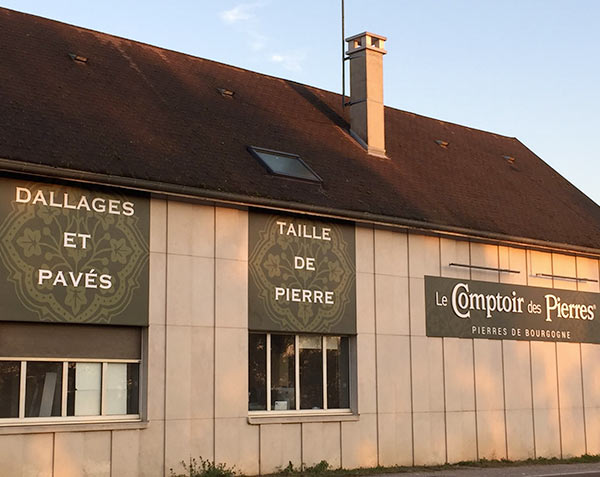
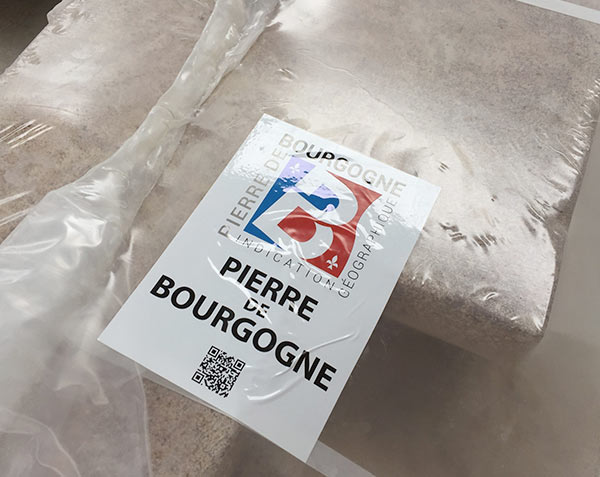
Our workshop: an organization with 3 divisions
DEBIT
Our workshop has 3 sawing machines, including 2 CNC saws. These sawing machines, equipped with diamond blades (diamond particles embedded on the blade) cut stone slabs from capable blocks. The "capable block" refers to a block cut to dimensions suitable for creating a future finished product (for example, a block capable of 90 x 60 x 18 cm would be used to make a stone sink). At this stage, the block is freshly sawn and still shows saw marks (concentric marks from the sawing process).
The cutter (the operator responsible for cutting) handles the supply from the stockpile of raw materials (using a forklift and slings), plans the daily cutting schedule, and updates the inventory after cutting the necessary elements. We store thin slabs (less than 5 cm thick) on racks under a metal shed and thick slabs flat on supports outdoors for non-freezing materials.
At Comptoir des Pierres, like all equipment in the stone industry, our saws require ample water to prevent the blades from overheating during cutting. We operate a closed-loop water system to conserve this resource. We estimate that 94% of the water used is returned to the system; the remaining 6% accounts for evaporation and water absorption by the stone during the cutting process.
CNC - Machining centers
Machining is a manufacturing step found in other industries besides stone, such as wood or metalworking. Its purpose is material removal or shaping of components. At Comptoir des Pierres, we have 3 CNC machines (machining centers) particularly from the Thibaut brand. Programming and machining with diamond tools allow us to save time in crafting sinks and basins. This approach lets our stonecutters focus on higher-value tasks.
The machining times are relatively long (15 to 20 hours for a sink, 12 hours for a shower tray...). The machines may not necessarily work faster than stonecutters but can operate overnight and on weekends. Therefore, our CNC operator's priority is to keep all 3 machining centers running at maximum capacity (day and night) to reduce lead times.
All orders for sinks, washbasins, shower trays, kitchen countertops, etc., go through these machining centers, including our engravings. However, coping stones or wall copings that do not require material removal or shaping will go directly from cutting to finishing.
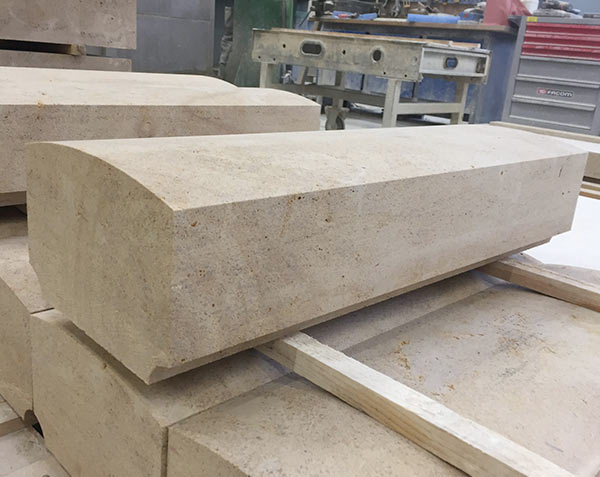
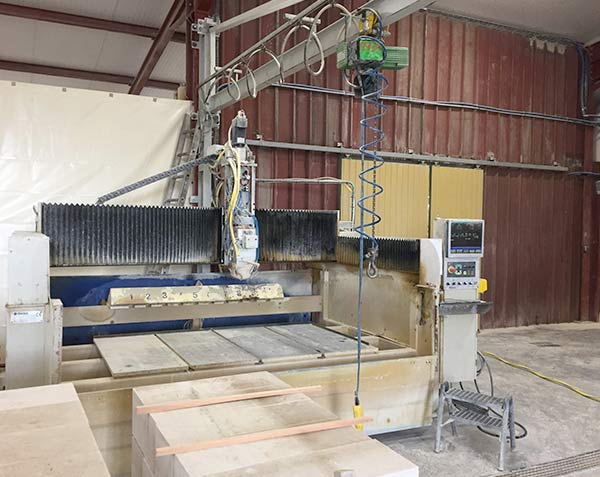
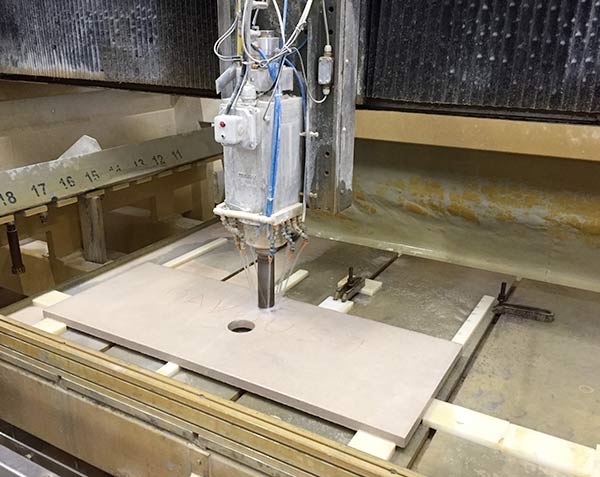
FINISHING AND PACKAGING
Finishing is the final stage of manufacturing, occurring just before packaging and shipping. It is carried out using traditional manual tools that are part of the stonecutters' craftsmanship (such as a bush hammer, chisel...) or with power tools (such as an angle grinder, sander...). In all cases, this final step requires great precision (for example, chisel-hammered finish, Old Burgundy Slabs, antique patina...), ensuring the expected level of quality.
Before proceeding to finishing, the pieces must be dry because wet stone can compromise the quality of the work. Working with water-saturated stone can generate mud that affects the precision of the work. To address this, we have a dryer that accelerates the drying process between cutting or machining and finishing stages.
The final step is packaging, where items are securely packed on pallets or in crates to ensure safe delivery of your order.On average, it takes about 1 hour and 30 minutes to prepare an order for shipping.
If you have any additional questions about our workshop or manufacturing process, please feel free to contact us. Even better, you're welcome to schedule a visit to our facilities in Comblanchien (21) to see everything firsthand!
